That black patch looks much darker than the bbw. A pool of manganese?
You are using an out of date browser. It may not display this or other websites correctly.
You should upgrade or use an alternative browser.
You should upgrade or use an alternative browser.
Coticule love... show off your rock
- Thread starter Drybonz
- Start date
This very very hard natural grown is a great finisher. The razor gets super sharp very easily, a three-day beard was shaved like a ladies-beard. I like the edge much more than a SG20k edge, the sharpness is the same, but if I asked my skin, the Dressante is clearly the winner.
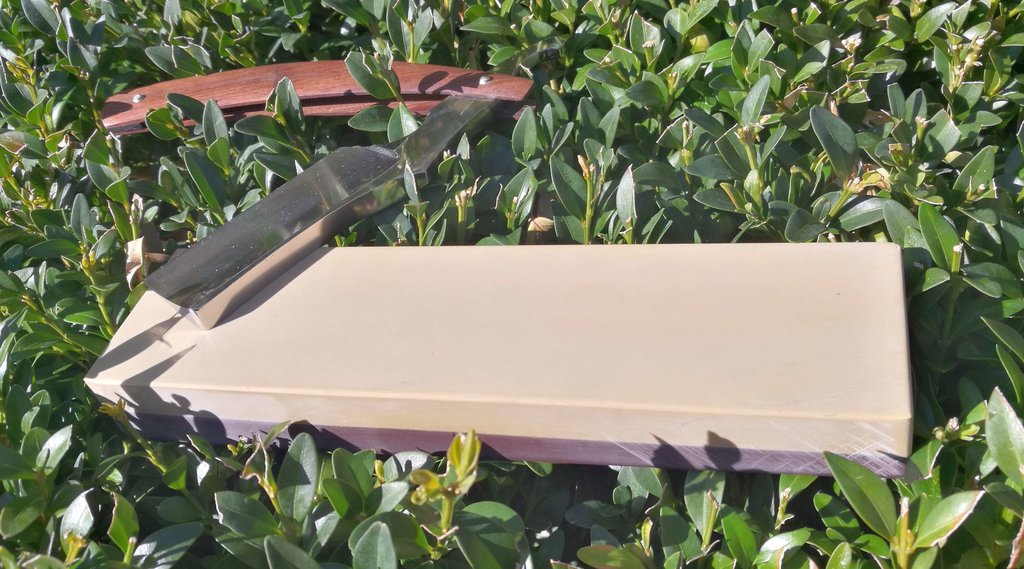

Yes, I think there could be manganese mixed up with BBW. The BBW looks almost black at the last photos, I think this is due to the lighting (halogen) and some dirt or dust on the stone. In daylight, the back of the stone looks more like a BBW than a Dragon´s Tongue , but is still very dark. The black patch is really black, but in sunlight, it has a bit metallic blue in there.That black patch looks much darker than the bbw. A pool of manganese?
Last edited:
It’d been awhile since I posted on here, but going back and checking out some super nice Coticule’s looks like you guys have hit quite a few jackpots.
I got a very nice shave from this one (7,8" x 1,6"), the edges get very sharp. It is slow on slurry, when talking about removing metal, the slurry stays white. But it is a fast and very fine finisher or polisher.
The yellow glue and the BBW backing shows, that it is a stone from Burton Rox. First I thought it was glued the wrong way round, the homogeneous creamy layer is below. But I am very pleased about the honing result.

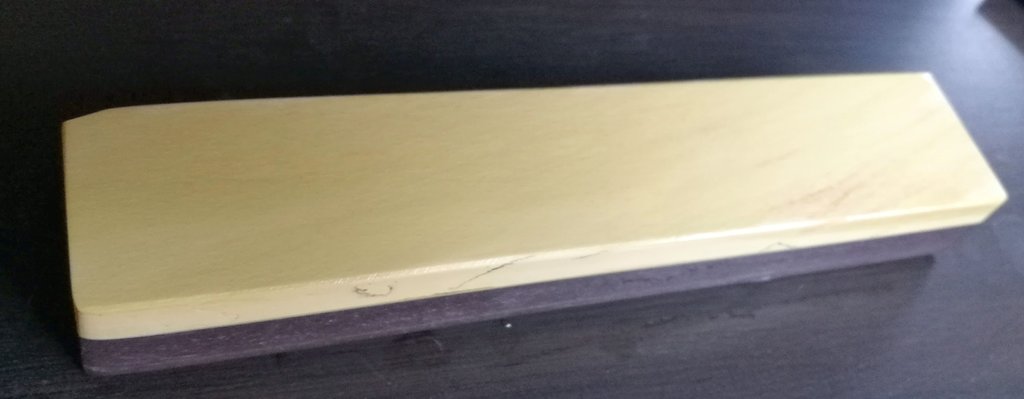

The yellow glue and the BBW backing shows, that it is a stone from Burton Rox. First I thought it was glued the wrong way round, the homogeneous creamy layer is below. But I am very pleased about the honing result.



Where did you get this info? I’ve heard very little about the Burton Rox era stones but one of the things was that the glue joints were usually very tight.The yellow glue and the BBW backing shows, that it is a stone from Burton Rox.
From what I recall we’re really sort of referring to two separate things here.
What I’m guessing you guys are referring to is: There was a time period when the Ardennes operation was either owned or run by a guy named Burton. I don’t know any facts but the story goes that he was totally in love with the stones and had some hoarder tendencies so when his time passed there was a stash of the most premium stones ever mined that are attributed to him but in no way homogenous, or labeled, or identifiable as such. Trying to say a rock is from this stash or not without buying it from the mine isn’t really rational without some crazy tale of provenance.
The “Burton Rox” label I thought was the designation for the best top shelf premium stones for a while in some type of joint venture with Bart and the mine where stones were hand picked and tested off the assembly line and the very cream of the crop were designated “Burton Rox” and sold at a premium. That makes the production run much more modern and easier to determine layer and provenance, but I still haven’t ever seen a stone specially labeled. That newer series are the ones I’d heard had super tight perfect glue lines and a few other signs people looked for, but I’ve never actually handled a stone from that collaboration.
If you guys have read anything more or different I’d love to know more. It drives me nuts that some of my best stones are total mysteries from auctions and estates.
What I’m guessing you guys are referring to is: There was a time period when the Ardennes operation was either owned or run by a guy named Burton. I don’t know any facts but the story goes that he was totally in love with the stones and had some hoarder tendencies so when his time passed there was a stash of the most premium stones ever mined that are attributed to him but in no way homogenous, or labeled, or identifiable as such. Trying to say a rock is from this stash or not without buying it from the mine isn’t really rational without some crazy tale of provenance.
The “Burton Rox” label I thought was the designation for the best top shelf premium stones for a while in some type of joint venture with Bart and the mine where stones were hand picked and tested off the assembly line and the very cream of the crop were designated “Burton Rox” and sold at a premium. That makes the production run much more modern and easier to determine layer and provenance, but I still haven’t ever seen a stone specially labeled. That newer series are the ones I’d heard had super tight perfect glue lines and a few other signs people looked for, but I’ve never actually handled a stone from that collaboration.
If you guys have read anything more or different I’d love to know more. It drives me nuts that some of my best stones are total mysteries from auctions and estates.
But I agree, trying to say a vintage coti came from this era or this vein without any proof is pure speculation. They vary so much even inside the veins themselves there’s just no way to guess what is what.
Ha! Of course you have serial #001, what was I thinking posting like I know anything on old Cotis.
What ever happened to the Burton series? Defunct now, or still available just not publicized? I wouldn’t mind having a stone hand picked and evaluated by someone who’s handled a billion of these.
What ever happened to the Burton series? Defunct now, or still available just not publicized? I wouldn’t mind having a stone hand picked and evaluated by someone who’s handled a billion of these.
The two lower stones were bought 1990, so they are produced by Burton Rox I think. These are extra 1 or selected plus, how the best quality is named today and were bought by a company that needs very, very fine stones. The stone on top is from Ardennes Coticule, a thick white glue joint.
From what I know, the ´Burton Series´ was not a Burton Rox or Ardennes Coticule marketing name. I only know one stone, or is there more than the #0001?
The glue is different on my old coticules. Some have such a thin joint that the glue can not be seen. Some have a yellow and my new ones have a big white glue joint. Some of my old bouts have a very dark yellowish-grey glue.
I found some information on `Grinding and Honing Part 4. - Belgian Whetstones´.(2nd picture)
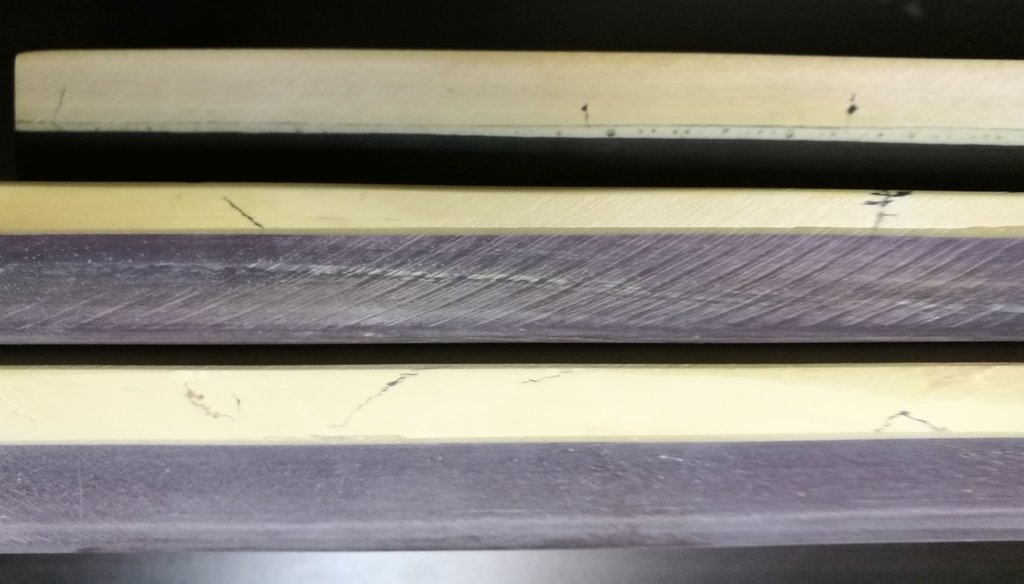
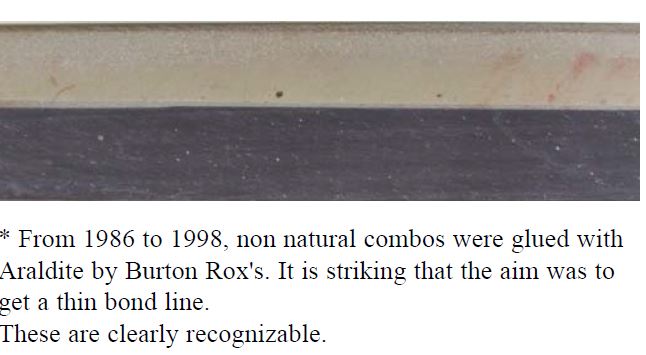
From what I know, the ´Burton Series´ was not a Burton Rox or Ardennes Coticule marketing name. I only know one stone, or is there more than the #0001?
The glue is different on my old coticules. Some have such a thin joint that the glue can not be seen. Some have a yellow and my new ones have a big white glue joint. Some of my old bouts have a very dark yellowish-grey glue.
I found some information on `Grinding and Honing Part 4. - Belgian Whetstones´.(2nd picture)


View attachment 1015224 The Burton series was a short run of “exceptional” stones around 2009 IIRC. They looked something like this
Oh the days and days I’ve kicked my hind end for not buying that one off ya cuz.
I don't even want to imagine what that coticule would sell for. Wouldn't be shocked if it cleared 2000
I know I was thinking the same thing... in my mind there’s only provenance or speculation and really no grey area. Something either goes for the valid premium price or it goes for the utility price. That’s a premium stone for sure.
Yes, I think the price would be very high because of its size, that is really unique for a Les Lat. And due to its famous 'Burton Series' declaration of course. The hybrid has a greenish tinge, that is also unique I think, I like it. But I keep in mind, that there was no Burton series and that it is a stone from 2009(?), and so it is not a Burton Rox.
Interesting for me was, that the gentlemen from whom I bought my last stones, has over 130 premium coticules, which were mostly bought from 1960 to 1990. There was not a single stone that was 3" wide. All of them were between 1,5" to 2,5", even though some microtome knives are really big and over 6" long. I discovered for myself that it is even easier to finish a razor with a slight smile on a 1,5" or 2" wide stone with a rolling x-stroke. But I prefer wider stones for the ground work.
Interesting for me was, that the gentlemen from whom I bought my last stones, has over 130 premium coticules, which were mostly bought from 1960 to 1990. There was not a single stone that was 3" wide. All of them were between 1,5" to 2,5", even though some microtome knives are really big and over 6" long. I discovered for myself that it is even easier to finish a razor with a slight smile on a 1,5" or 2" wide stone with a rolling x-stroke. But I prefer wider stones for the ground work.
Last edited:
Here are my coticules with this typical thin Araldite joint, these are Burton Rox. I forgot the stone from page 475. Only two are shave tested so far, they leave stellar shaving edges. I also got a bunch of natural grown from Burton Rox. But before I will test these, I now try to get flat some Les Lat hybrid extra-extra stones that were bought in 1960 and 1961. I will take a photo when I am done.
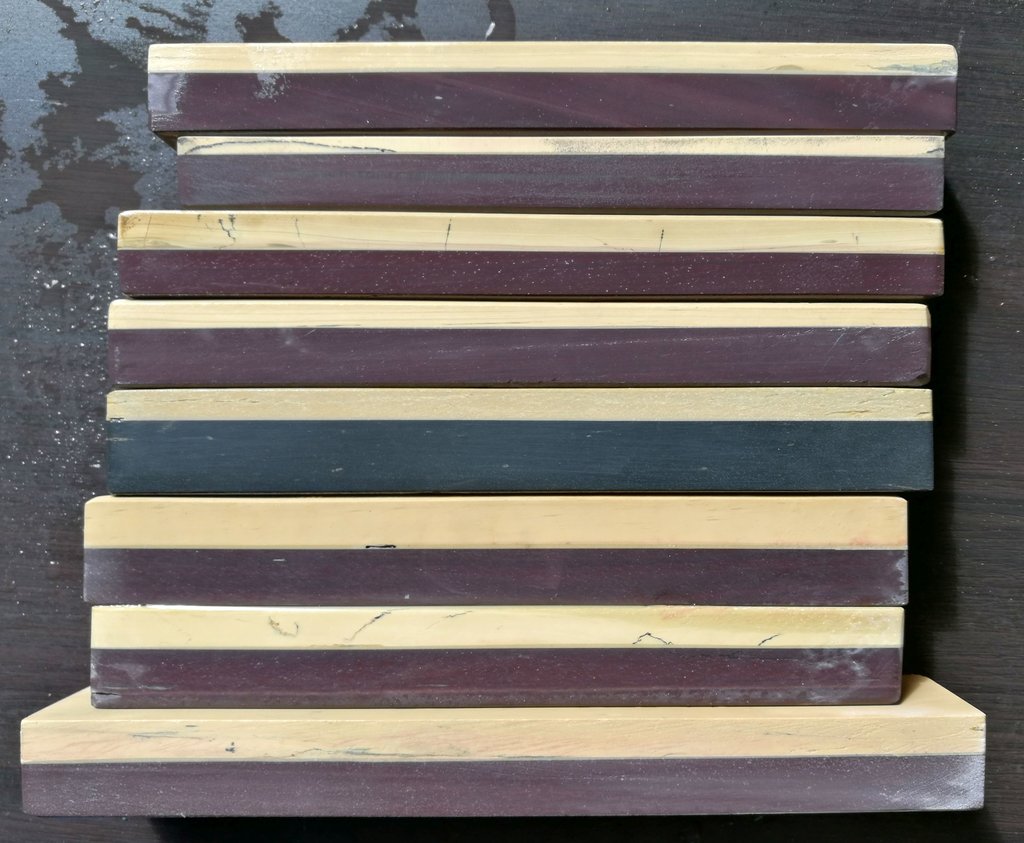

After 40 minutes of flattening Les Lat back sides, I just need a break. Here are two stones where I thought that they were from Ardennes Coticule.
The joint is pretty thick and the backing looks like the brazilian slate that is used nowadays. But these are also stones from Burton Rox, the glue is Araldit, only a bit thicker than usual. The backing is a black BBW that is similar to my Les Lat hybrid bout backing. It is abresive and very fine, much harder than the normal BBW. The yellow coticule is a La Grosse Jaune in my opinion. It is harder and way faster than my La Grise stones. The surface got brighter after some lapping on my Atoma. I have not shaved of it yet, but these two are very promising.
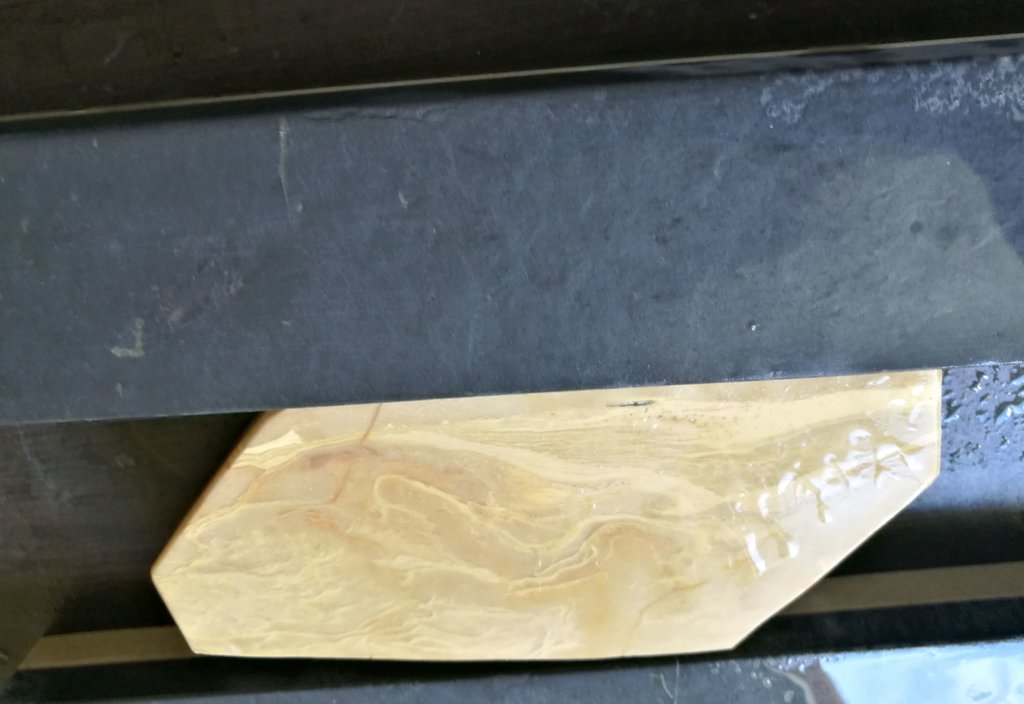
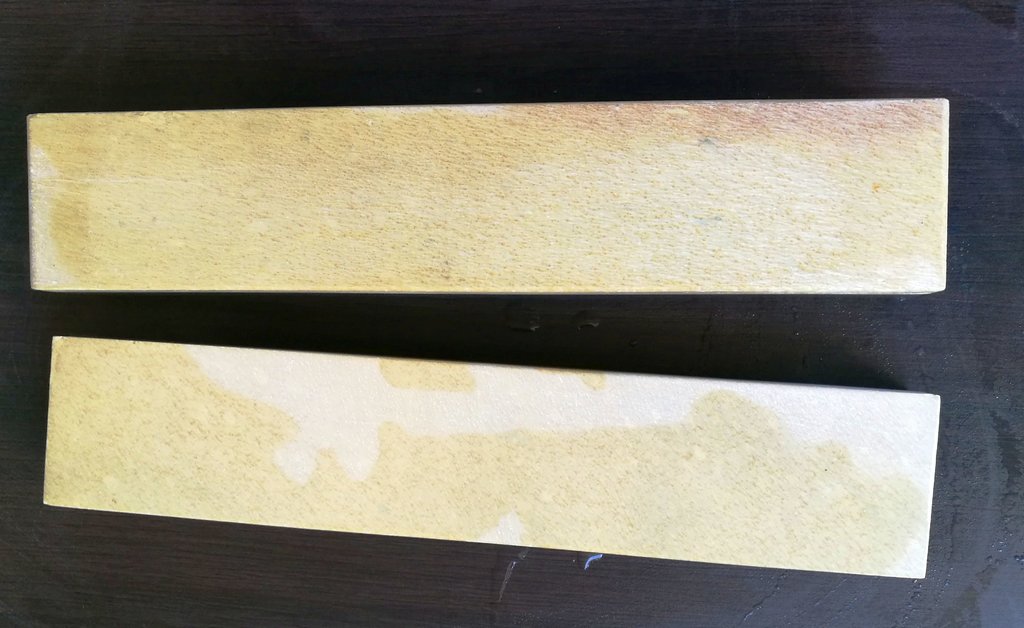
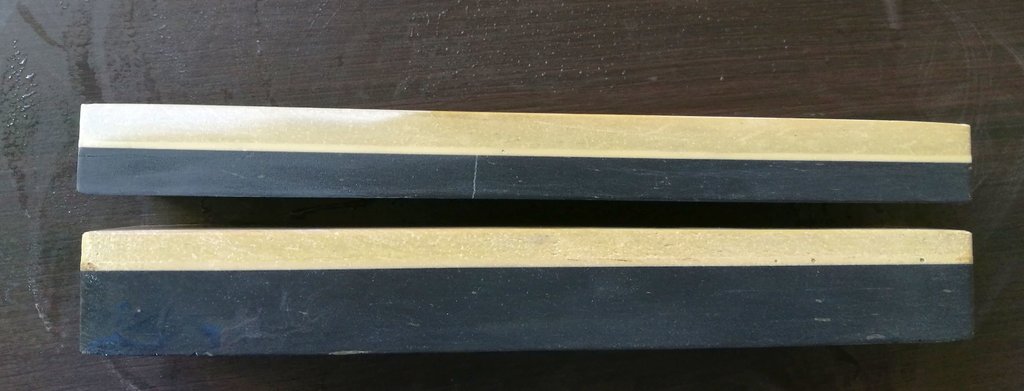
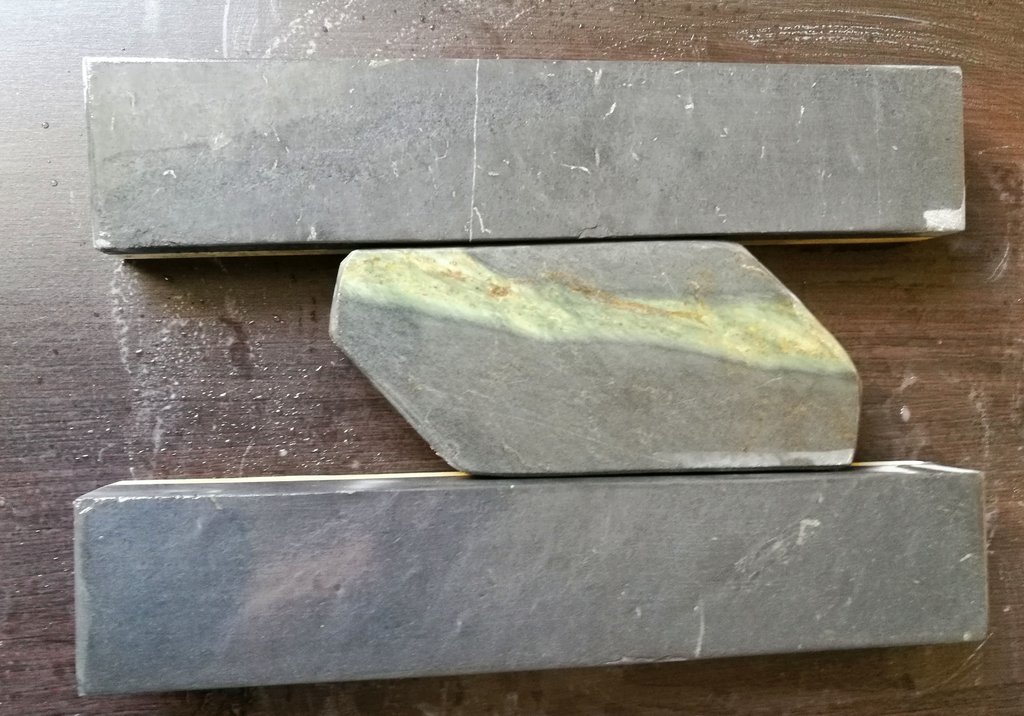
The joint is pretty thick and the backing looks like the brazilian slate that is used nowadays. But these are also stones from Burton Rox, the glue is Araldit, only a bit thicker than usual. The backing is a black BBW that is similar to my Les Lat hybrid bout backing. It is abresive and very fine, much harder than the normal BBW. The yellow coticule is a La Grosse Jaune in my opinion. It is harder and way faster than my La Grise stones. The surface got brighter after some lapping on my Atoma. I have not shaved of it yet, but these two are very promising.




Almost done with flattening, I will finish tomorrow. I just tried the black stone on a knife. It is fine and leaves almost a mirror polish and a very keen edge. Maybe a type of a black La Lune?
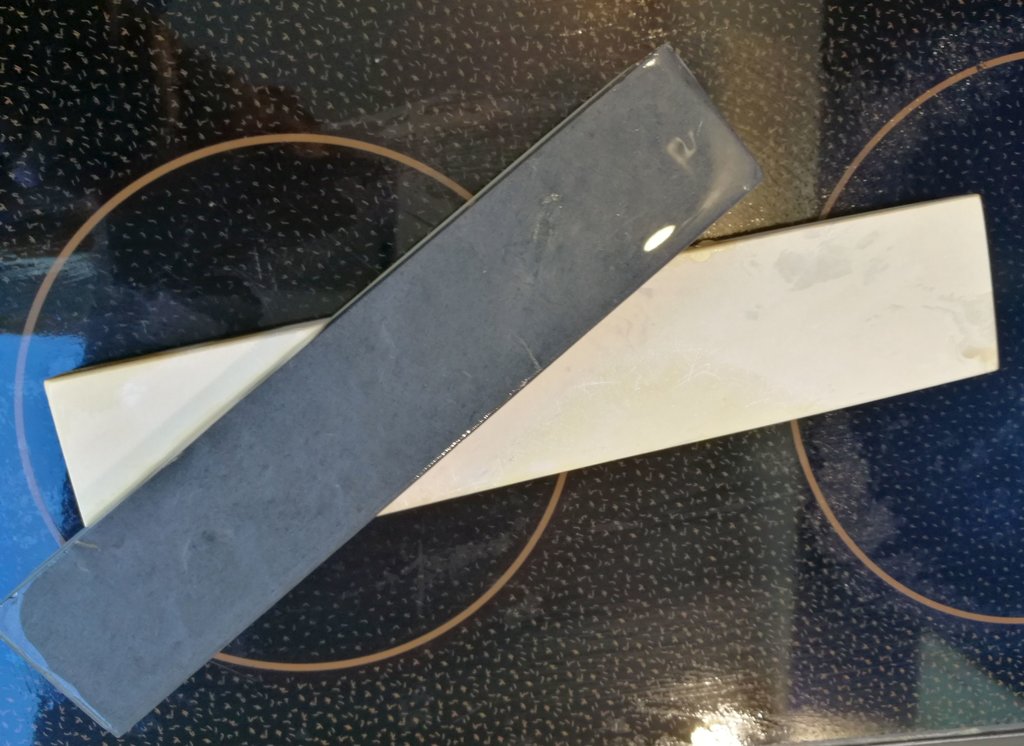

Nice looking Coticule, I need oneView attachment 1015224 The Burton series was a short run of “exceptional” stones around 2009 IIRC. They looked something like this
I got the information from Maurice, that these stones are La Grise. Ok for me, these can be great finishing stones, maybe not the easiest coticules. I am a bit surprised about how they can vary in hardness and speed. On the photo, soft to hard from bottom to top. The natural combo is harder than some coticules from other veins I have tried, a very hard stone for sure. From my La Grises I would say, the harder it is, the faster it will cut. Maybe the fastest are not so fine? I will go to the bottom of the question soon...but first I am playing with my new Les Lat hybrids.
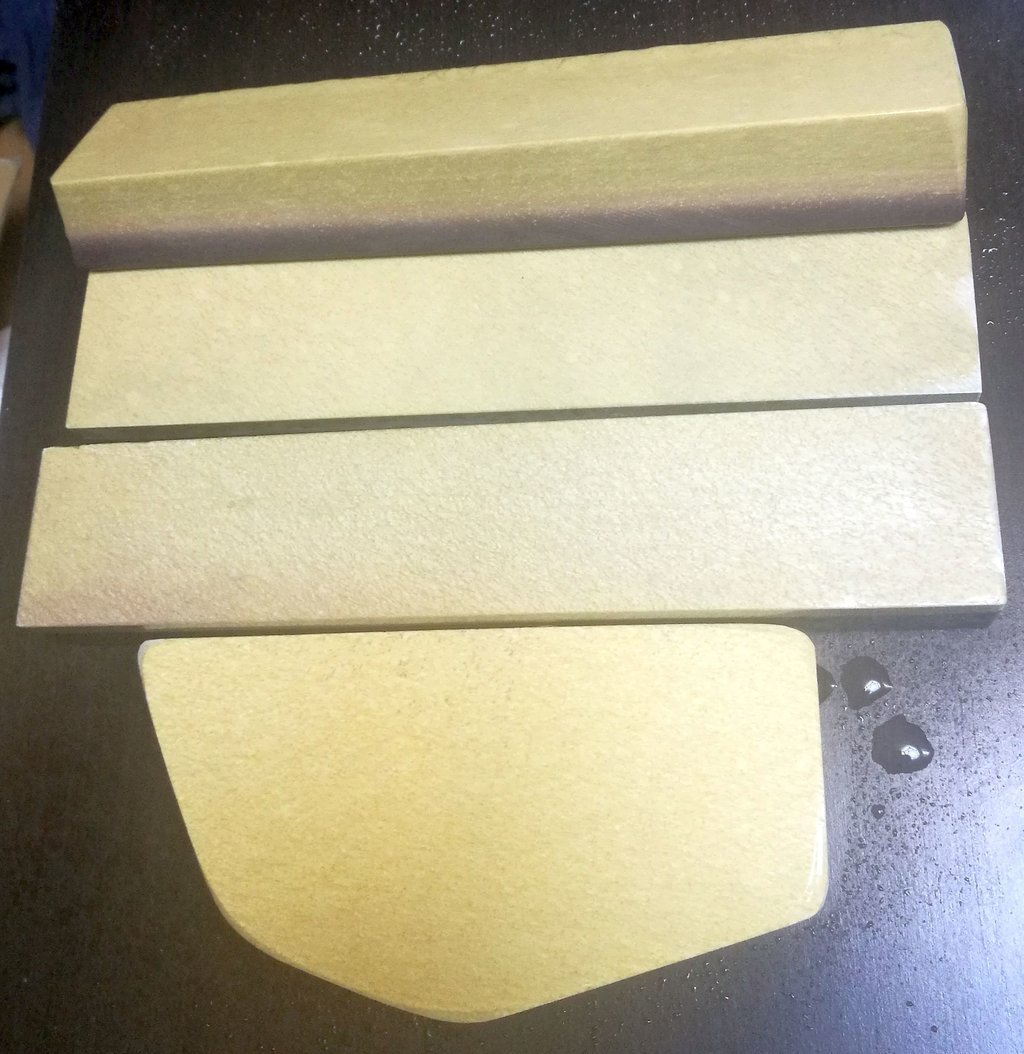

Similar threads
- Replies
- 56
- Views
- 40K
- Replies
- 23
- Views
- 21K
- Replies
- 0
- Views
- 4K
- Replies
- 21
- Views
- 16K
